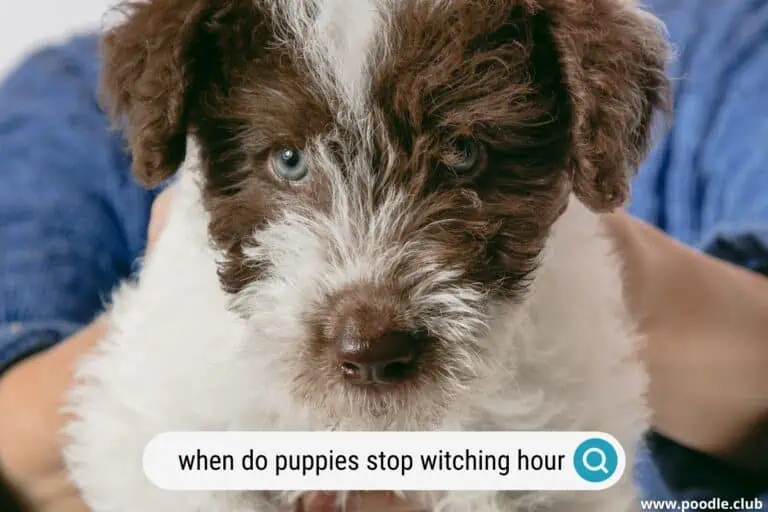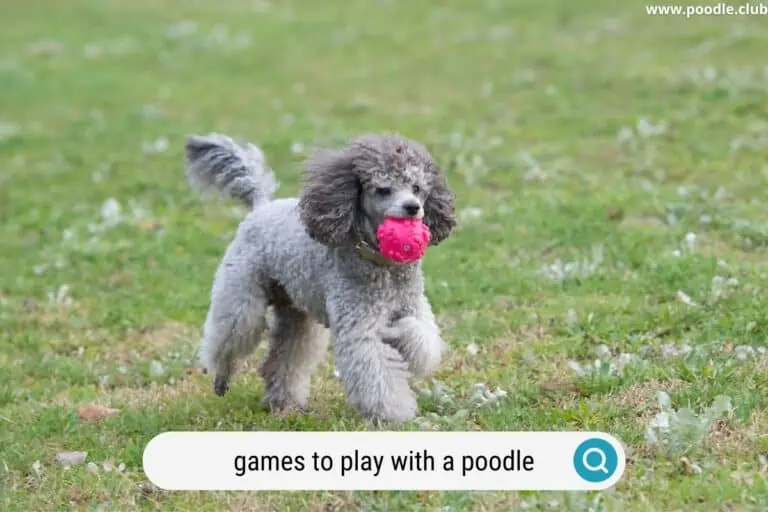How to Train a Scared, Shy, or Traumatized Dog: Expert Tips for Success
Training a scared, shy, or traumatized dog can be challenging, but with patience and proper guidance, it is possible to help these animals overcome their fears and become well-adjusted, confident companions.
Dogs with such behavioral issues may have experienced an unfortunate past that has instilled apprehensions and anxieties in them. As animal advocates and dog rescuers, we must take extra care when training dogs who have experienced trauma.
Understanding the root cause of their behaviors can greatly aid in developing an appropriate training approach tailored to their unique needs.
A suitable method to begin with is positive reinforcement and gentle exposure to stimulus, which can gradually help a dog build their trust and confidence. Consistency and patience are essential when dealing with fearful canines, as it takes time for them to reclaim their sense of security and adapt to new environments.
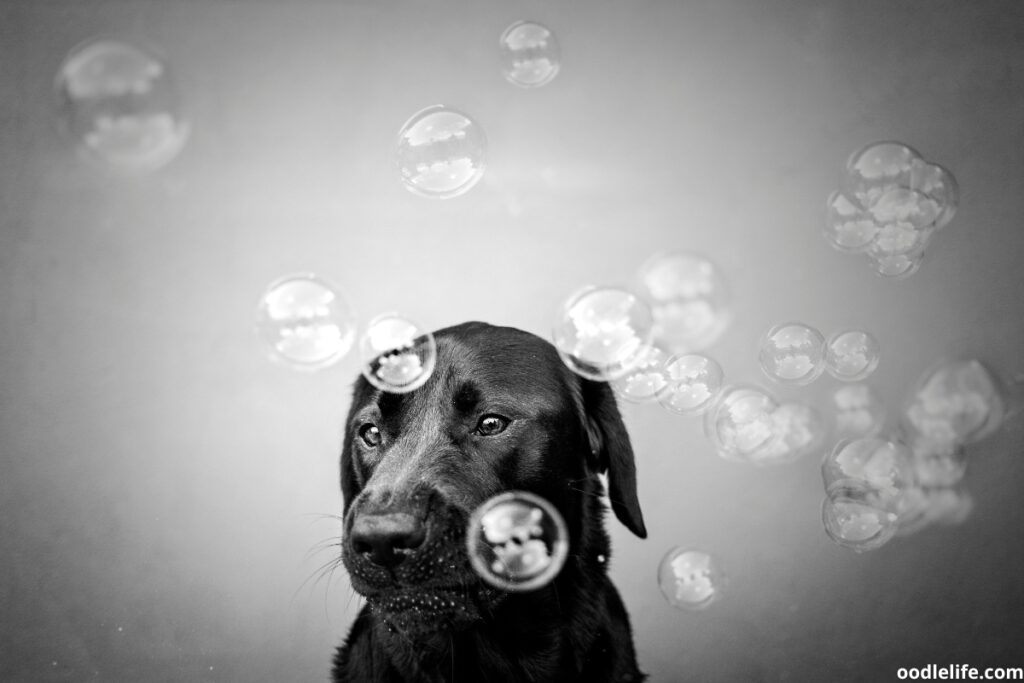
Combining a gentle approach with love, attention, and understanding will create a strong foundation for successful training progress.
Anecdote time:
Consider a traumatized rescue dog who trembled at the sight of stairs. Instead of forcing the pup to ascend the steps immediately, their owner slowly introduced them to the staircase, using treats and praise to reward even the slightest progress. Over time, the once terrified dog came to conquer the stairwell and claimed the title of “Stair Master Extraordinaire!”
Use such examples as inspiration on the journey to help scared, shy, or traumatized dogs overcome their fears, and turn them into confident, happy pets.
Recognizing Signs of Fear and Trauma
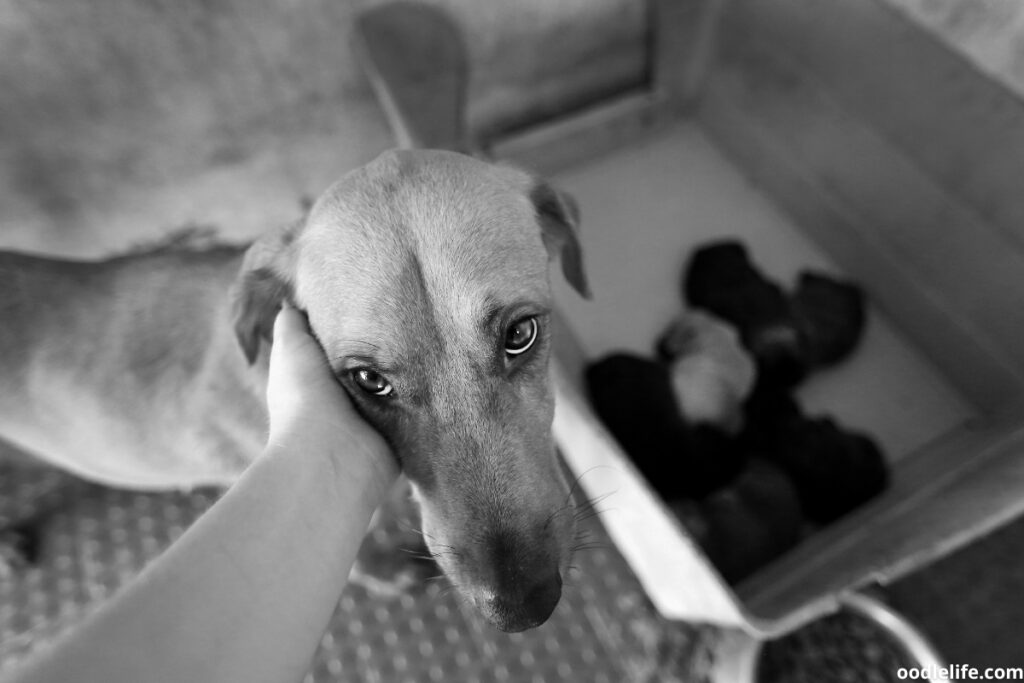
Body Language
When dealing with a fearful or traumatized dog, it’s essential to be aware of their body language. Dogs who may be afraid or nervous will often display the following non-verbal cues:
- Cowering: Lowering their body close to the ground in an effort to appear smaller.
- Shaking: A scared dog may tremble or shake, unable to control their fear.
- Panting: Rapid, shallow breathing can be a sign that your dog is anxious.
By paying close attention to a dog’s body language, you’ll be better equipped to recognize when they’re feeling overwhelmed and can adjust your training approach accordingly.

Behavior
Some behaviors common to fearful or traumatized dogs include:
- Avoiding direct eye contact: A scared or shy dog might avoid looking at you directly, as this can be interpreted as a threat.
- Growling: This vocal warning is often used by scared dogs to keep potential threats at bay.
- Lunging: A fearful dog might be defensive and display sudden lunging behavior.
If you notice any of these behaviors, it’s essential to remain patient and calm while working with your dog to help them overcome their fears.
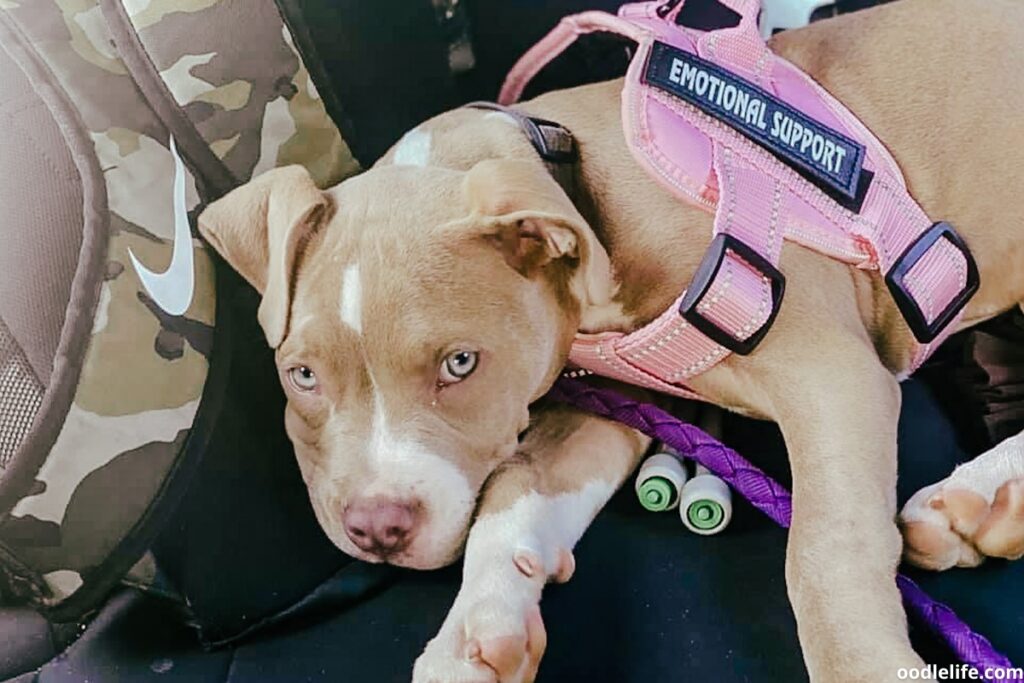
Fear Response (Triple F)
When a dog is frightened or traumatized, they generally react in one of three ways: freeze, fight, or flight. Here’s how these responses might manifest in a dog:
- Freeze: The dog becomes incredibly still, almost like a statue, too scared to move.
- Fight: An aggressive dog might lash out in an attempt to protect themselves from perceived threats.
- Flight: Choosing to flee the situation, a fearful dog might attempt to run away when they feel threatened.
Understanding these different fear responses can help you tailor your training techniques to better suit the needs of your scared or traumatized dog. Remember, it takes time and dedication to help your furry friend feel safe and comfortable in their environment, so be patient and persistent in your efforts.
PuppySpot is a reputable dog marketplace where you can browse and find compatible puppies right from the comfort of your home. They have placed over 200,000 puppies into homes in the US!
Gaining Trust and Building Confidence
Establishing a Safe Environment
To train a scared, shy, or traumatized dog, it’s crucial to create a secure and comfortable environment for them. Start by providing a designated safe space where the dog can retreat to whenever they feel overwhelmed, such as a crate or a quiet corner. Make sure the area is free from loud noises and potential triggers.
Maintaining a consistent daily routine, including feeding, walks, and playtime, can also help ease anxiety and instill confidence.

Approaching with Caution
When interacting with a scared dog, always approach them with caution and respect. Avoid direct eye contact, as it may be perceived as threatening by the dog. Instead, lower yourself to their level and approach them from the side, using slow and gentle movements. Speak in a soft and soothing tone, offering them treats or praise when deemed appropriate. Remember, patience is key when building trust with a fearful dog.
Positive Reinforcement
Utilize the power of positive reinforcement to train a traumatized dog effectively. Encourage good behavior by offering rewards like treats, praise, or affection for desired actions. For instance, if the dog allows you to pet them without showing signs of anxiety, immediately reward them with a tasty treat or a loving pat. This conditioning helps reinforce the dog’s confidence in you and strengthens their trust in the training process.
Gradual Exposure to Triggers
Gradual exposure, counterconditioning, and desensitizing to triggers are essential parts of training a scared or traumatized dog. In consultation with a veterinarian or an animal behaviorist, you can identify the dog’s specific phobias, such as strangers, children, or other animals.
Then, gradually expose the dog to these triggers in controlled and manageable levels. Be mindful of their comfort and progress, adjusting exercises as needed, and always positively reinforcing their steps towards overcoming their fears.
Remember, when training a scared, shy, or traumatized dog, it’s crucial to establish a safe environment, approach with caution, leverage the power of positive reinforcement, and gradually expose them to their triggers. Keep the tone of voice confident, neutral, and clear, and maintain a good sense of humor and patience throughout the process. Happy training!
Socialization and Desensitization

Introducing New People and Environments
A scared, shy, or traumatized dog needs gradual and gentle exposure to new people and environments. Start by slowly introducing them to calm, friendly people in a controlled setting. Remember, patience is key! It’s important not to force interactions but rather give the dog time to approach on their own terms. Use treats and praise to create a positive association with new experiences.
Key Tips:
- Keep initial one-on-one meetings short
- Use a calm, patient, and gentle approach
- Reward your dog for positive interactions with praise and treats
Encounters with Other Dogs and Animals
It’s essential to expose a scared dog to other dogs and animals progressively. Plan controlled play sessions with friendly, well-behaved animals. As their confidence grows, you can introduce them to larger groups. Supervise these encounters and intervene if necessary.
Tips for a Positive Experience:
- Begin with brief, one-on-one interactions
- Ensure other dogs are calm and well-behaved
- Gradually increase the size of playgroups
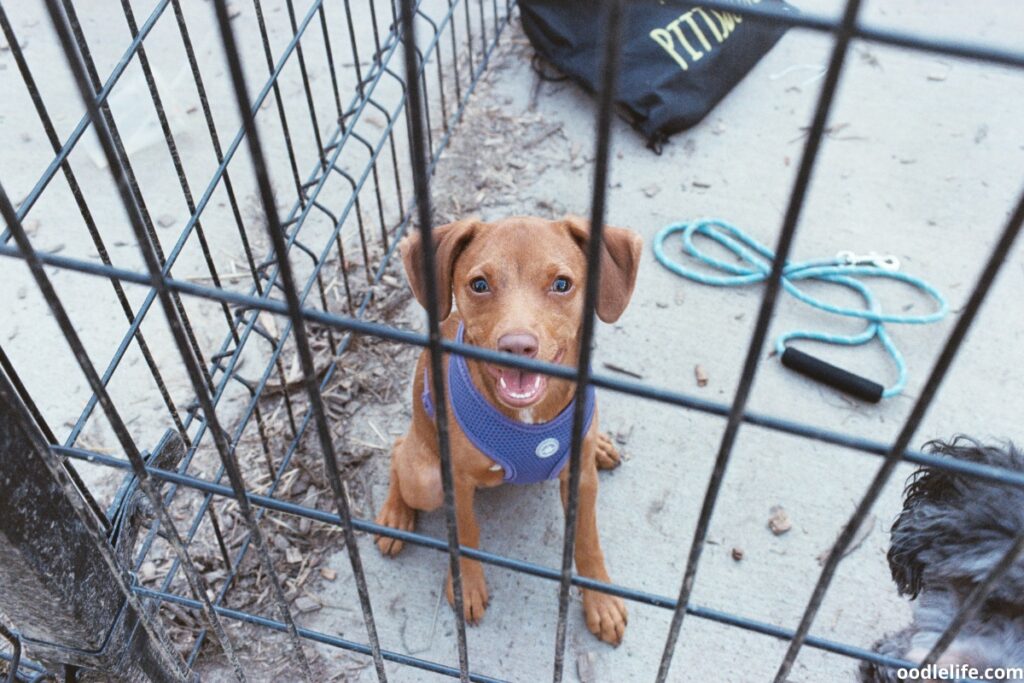
Addressing Noise Phobias
Loud noises can cause a fear response in sensitive dogs. Desensitize them by gradually exposing them to the noise at a low volume, while providing treats and praise. Gradually increase the volume as the dog becomes more comfortable. This process may take several sessions, so be patient.
Strategies for Tackling Noise Phobia:
- Begin at a low volume, gradually increasing over time
- Pair noise exposure with treats and positive reinforcement
- Practice patience and empathy
Counter-conditioning
Counter-conditioning is a method used to change a dog’s response to triggers, like bad experiences or lack of socialization. Introduce the dog to these triggers while providing rewards, such as praise or treats, to create a positive association. A professional dog trainer or dog behaviorist may be beneficial for some dogs.
Counter-conditioning Techniques:
- Identify triggers for your dog’s fear or anxiety
- Use rewards to create a positive association
- Consider seeking the help of a professional trainer or behaviorist
Remember, socialization and desensitization take time, so don’t expect immediate results. With dedication, patience, and a bit of humor, anyone can help their canine companion overcome their fears and anxieties, transforming into a more confident and well-adjusted pet.
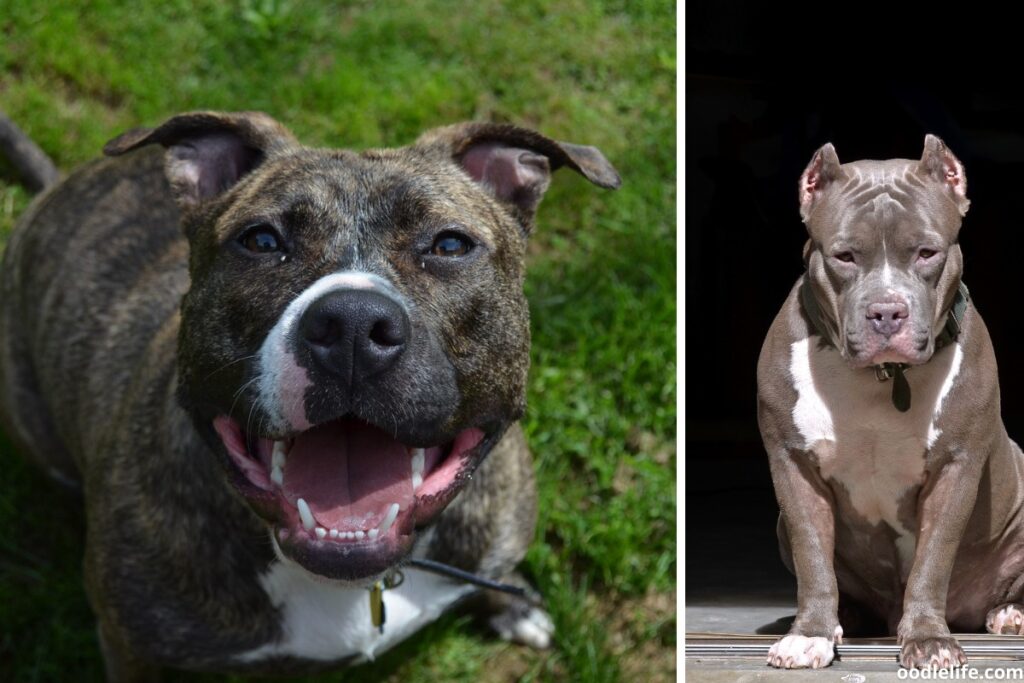
Dealing with Past Abuse and Trauma
Understanding the Impact of Past Experiences
When working with a scared, shy, or traumatized dog, it’s important to recognize how past experiences, such as abuse or trauma, can affect their behavior. Dogs, like humans, can develop emotional and behavioral issues from negative experiences.
For instance, a dog that has been abused may become overly fearful, aggressive, or panic in certain situations.
Understanding your dog’s reactions to these triggers can help you better respond and support them during the healing process.
Working with a Professional Dog Trainer or Behaviorist
Dealing with a dog suffering from past trauma can be challenging, making it essential to seek the support of a professional dog trainer or animal behaviorist. These experts have extensive knowledge of dog behavior and are skilled in using appropriate techniques to help them overcome their fears.
They can provide customized training plans tailored to your dog’s unique needs, helping them build trust and confidence in a safe and supportive environment.
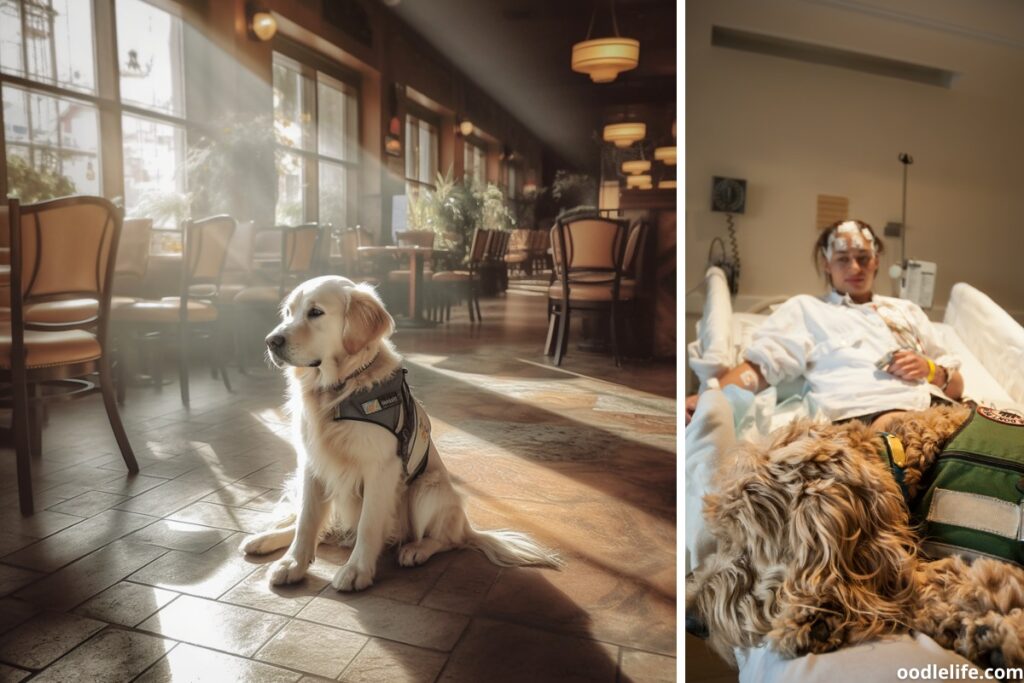
Recognizing Potential Setbacks and Limitations
When working with a scared, shy, or traumatized dog, it’s crucial to acknowledge that progress may be slow and setbacks are expected. Rehabilitation doesn’t happen overnight; it’s an ongoing process that requires patience and understanding. Like a marathon runner who’s suffered an injury, the dog might need time and careful training to regain strength and confidence in their abilities.
Remember, it’s essential to remain patient and empathetic with your dog while working through these challenges. Celebrate small achievements, and don’t forget to laugh together as you both learn and grow in this journey. It might seem like an uphill climb, but with time and persistence, your dog can develop into a more confident and well-adjusted companion.




